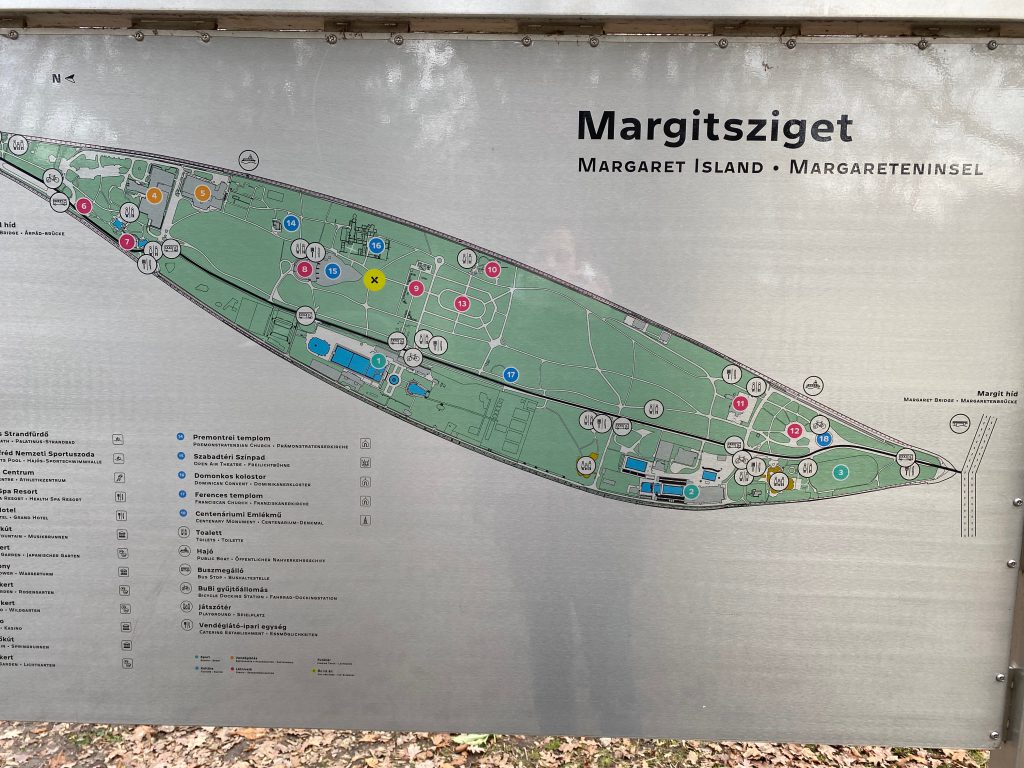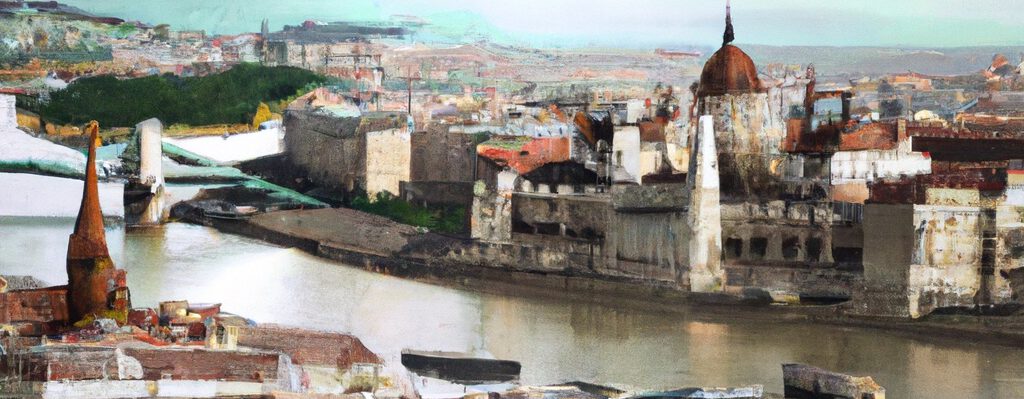Budapest is the capital and largest city of Hungary, located in the north-central part of the country along the Danube River. It is a popular tourist destination known for its thermal baths, historic architecture, and vibrant nightlife. The city is divided into two main areas, Buda and Pest, which are connected by several bridges, the most famous being the Széchenyi Chain Bridge. The city has many famous landmarks such as the Buda Castle, St. Stephen’s Basilica, and the Hungarian Parliament Building, we will later come to.
Budapest is also perfect for a weekend getaway. I was in total with arrival and departure 4 days in Budapest. But also less would be enough.
Currency in Budapest
The official currency in Budapest is Forint. Often abbreviated as HUF or ft.
Security
Budapest is a clean and very safe city. So it is also perfect for solo travel.
Public transportation
Budapest has the advantage that most of the sights can be reached on foot. In addition, it still has an extensive transport network with buses, trams and metro. I used each of this means of transport during my stay.
Tickets are only available at vending machines in the Metro stations and the Main Station. So you have to take care of the tickets in advance. It is advisable to buy a 24h or 72h ticket. It is also possible to buy a 10-ticket, so you can switch to public transport whenever you need to.
Sightseeing
In Budapest, most things are within walking distance. The first day I walked everything – from the hotel to the train station, then down the street towards the Danube. On the way there I looked at the synagogue and the forecourt. Furthermore, there is a nice little shopping street near the Danube. If you are at the Danube you should not miss the Liberty Bridge, Elisabeth Bridge and the Chain Bridge.
Over the Elisabeth Bridge I went first in the direction of Gellért hill. From here you have a wonderful view of the city. Also a beautiful view of the city you have from the nearby Buda Castle (Royal palace).
Budapest, Kossuth Lajos Tér 1-3, 1055, Hungary
Budapest, Szent István Tér 1, 1051, Hungary
Budapest, Gasztro Sétány 1, 1138 Ungarn
Budapest, Vajdahunyad stny., 1146 Ungarn
Budapest, Állatkerti Körút 9-11, 1146, Hungary
Budapest, Szent György Utca 2, 1013, Hungary
Gellért-hegy, Gellért tér, Budapest, 1118, Hungary
Lánchíd, Lánchíd, Budapest, 1051, Hungary
Budapest, Dohány Utca 2, 1075, Hungary
Váci Utca 31, 1052, Budapest, Hungary
Keleti Pályaudvar Alosztály, Budapest
Main station / Keleti Budapest
If you travel to Budapest by train, you will arrive at Keleti main station. From there also several buses and the metro run. Since the station itself is relatively small, you should take a look at the station forecourt. Especially the station building is very beautiful.
Dohány Street Synagogue
The Dohány Street Synagogue, also known as the Great Synagogue of Budapest, is the largest synagogue in Europe and the second largest in the world. It is located in the 7th district of Budapest, Hungary, and is a significant architectural and cultural landmark.
The synagogue was built in the Moorish Revival style between 1854 and 1859 and is a unique blend of Islamic, Byzantine and Gothic elements. It can hold 2,964 people and is an active place of worship for the Jewish community of Budapest. The Dohány Street Synagogue is also a museum and a memorial to the Jewish victims of the Holocaust.
Shopping street – Vácí Utca
Very close to the Danube is a nice little shopping street. Here are some small souvenir stores and stores of well-known brands like the Hard Rock Cafe.


Chain bridge / Kettenbrücke
The Chain Bridge, also known as Széchenyi Lánchíd, is a suspension bridge that spans the River Danube in Budapest, Hungary. It connects Buda and Pest, the two sides of the city, and is one of the most iconic landmarks of Budapest.
The bridge was designed by English engineer William Tierney Clark and was built between 1839 and 1849. It was the first permanent bridge across the Danube in Hungary and played a significant role in the development of the city. The Chain Bridge is made of iron and steel and is adorned with stone lions on both ends.
It is a popular tourist attraction and offers beautiful views of the city and the river.
Gellért hill / Gellértberg
For those who enjoy physical activity and are not afraid of a little uphill walk, the Gellért hill is perfect. You will be rewarded with a beautiful view over the city. For those who do not want to do that to themselves, they can enjoy the view instead of Gellért hill at the Royal Palace.
? Gellért has the advantage of being located directly on the Danube. There are several paths leading to the top of the mountain. One of the steepest is the path coming from the Elizabeth Bridge. Here several stairs lead to the destination. For those who prefer it a little less steep, the path at the Liberty Bridge is suitable. Directly at the Gellért Hotel leads here the way still.
Royal Palace / Burgpalast / Buda Castle
One of the highlights is the Buda Castle, also known as the Royal Palace. Some of the architectural elements reminded me of Rome (St. Peter’s Basilica, Trevi Fountain).
The palace has a rich history that spans several centuries, and has served as the residence of Hungarian kings and a symbol of the country’s political power. The palace was originally built in the 13th century, but has undergone many additions and renovations over the years. The palace has a unique architectural style that combines Gothic, Baroque, and Renaissance elements. Today, Buda Castle is a UNESCO World Heritage Site and it is one of the most visited tourist attractions in Budapest.
The palace complex includes several museums such as the Hungarian National Gallery and the Budapest History Museum, as well as the beautiful Matthias Church. Visitors can enjoy stunning views of the city from the palace’s terrace, and it’s also a great place to learn about the history and culture of Hungary.


? The castle is located directly above the Danube. It is perfectly accessible on foot, but also via Széll Kálmán tér (Metró line 2). From there you can take the Várbusz (No. 10 or 110) up to the castle.
? Another exciting way to get there is by cable car. The stop for this is at the Chain Bridge on the Buda side (bus 16 from Déak Ferenc tér).
Széchenyi Thermal Bath
The Széchenyi Thermal Bath is a popular tourist destination and a great way to experience the traditional Hungarian culture of bath-taking.
The Széchenyi Thermal Bath is one of the most famous and largest thermal baths in Europe, located in the City Park in Budapest, Hungary. It was built in 1913 in the Neo-Baroque style and is known for its architectural beauty and unique atmosphere.


The bath features several indoor and outdoor pools, including a large pool filled with thermal water, a wave pool, a swimming pool, and a children’s pool. The thermal water, which is rich in minerals and sulfur, is sourced from two hot springs and is believed to have healing properties. The bath also offers a variety of health and beauty treatments such as massages, saunas, and steam rooms.
? Metro M1 direction to Mexikói út. Exit at Széchenyi fürdő.
Vajdahunyad castle with city park Városliget
When you visit Széchenyi Thermal Bath, you should also make a small detour to Vajdahunyad castle in Városliget city park.
The castle was built in 1896 as part of the Millennial Exhibition to celebrate the 1,000th anniversary of the Hungarian conquest of the Carpathian Basin. The castle is a unique architectural blend of various styles and periods, including Gothic, Renaissance, Baroque, and Romanesque. The most striking feature of the castle is its impressive main tower, which is a replica of the Gothic castle in Hunedoara, Romania.
Margaret Island / Margareteninsel / Margit-sziget
Margaret Island is located on the Danube and offers a beautiful park in the middle of Budapest. The legendary Sziget Festival in Hungary takes place on this island. It also offers a beautiful park all year round with several old dignified buildings, a small animal enclosure and lots of green areas.


? Tram 4 and 6. Exit at Margitsziget / Margit híd
St. Stephen’s Basilica
St. Stephen’s Basilica, also known as Szent István Bazilika, is a Roman Catholic basilica located in the heart of Budapest, Hungary.
It is named after the first king of Hungary, Saint Stephen, whose mummified right hand is housed in the basilica as a relic. The basilica was built between 1851 and 1905 in the neoclassical style and is the largest church in Budapest. It features a grand dome, a bell tower, and several chapels, including the Chapel of the Holy Right which contains the relic of Saint Stephen’s hand. The interior of the basilica is adorned with beautiful frescoes, mosaics, and statues, including a large statue of Saint Stephen.
The basilica is a popular tourist attraction and also serves as an important religious center for the Catholic community in Hungary. Visitors can climb the 365 steps of the dome to enjoy a panoramic view of the city, and it’s also a popular spot to admire the beautiful architecture of the Basilica.
Unfortunately, I did not have enough time to see this sight, but I would still recommend it.
Hungarian Parliament Building
The Hungarian Parliament Building, also known as the Országház, is the seat of the National Assembly of Hungary and one of the most iconic landmarks in Budapest. It is located on the banks of the River Danube and is the largest building in Hungary and one of the largest parliament buildings in the world.
It was built between 1885 and 1904 in the Gothic Revival style and features a grand central dome, a tower, and several annexes. The exterior of the building is adorned with intricate details and sculptures, and the interior is no less grand, with a central hall that can accommodate up to 96 members of parliament.
The Hungarian Parliament Building is a popular tourist attraction and visitors can take guided tours to see the historic chambers, the grand staircases and the crown jewels. The building also serves as an important symbol of Hungary’s democratic heritage and its architectural significance.
Unfortunately, I did not have enough time to see this sight, but I would still recommend it.
Nightlife
Budapest is known for its colorful nightlife. Today the Ruins Bars are one of the most popular places in Budapest. The oldest and largest ruin bar is Szimpla Kért. Live concerts are held here regularly. However, any other ruin bar is also worth a visit.
I participated in a Pub Crawl in Budapest. Here we visited a total of 3 pubs and 1 club:
- Doboz
- Extra (ruin bar)
- Kispipa (ruin bar)
- Instant club
I can only recommend something like this to everyone, especially if you are traveling alone. This is a great way to meet other people. In our group, for example, there were many people from the States. We played a few drinking games at the beginning, like sucking or flipping cups, and some more familiar ones like beer pong. I also met two other solo travelers (from Spain and the USA). They also felt very safe in Budapest, as they told me.
https://www.tripadvisor.de/AttractioDnProductReview-g274887-d11480515-The_Original_Budapest_Pub_Crawl_One_Hour_Open_Bar_Free_Shots-Budapest_Central_Hung.html

Leave a Reply